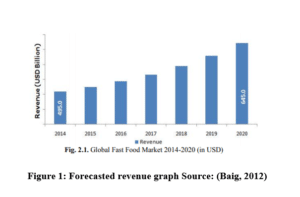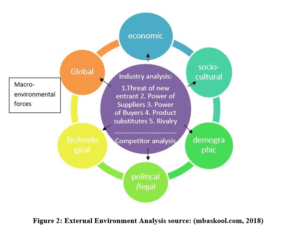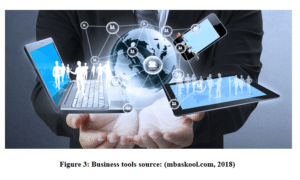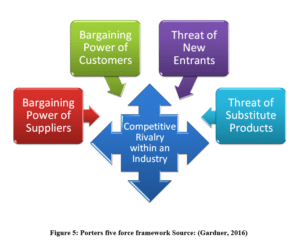01 Organisational Strategy And Leadership Assignment Sample
Here’s the best sample of 01 Organisational Strategy And Leadership Assignment, written by the expert.
Introduction
The selected industry for the report is Fast food industry. External environment and internal environment that affects the industry structure is explained in the report. PESTLE framework is used to analyse the external factors that affects chosen industry. Industry analysis is done using Porter’s five forces framework and Factors that drive the profitability of the industry is explained.
Main themes
Overview of Global Fast Food Industry
Over the last ten years, fast food industry growth is tremendous. It has jumped many hurdles in the business market. People in every market are becoming more health conscious. Global economy is weakened and increasing consciousness in society regarding health risk connected to improper diet, fatty, high sugar and salty food, but fast food industry is overcoming all external factors, force and pressure (Avelar & Rezende, 2012).
This industry’s effort and attempt is always appreciable. Fast food industry has amoebic structure; it is highly flexible and responsive to the customers taste and preference. This quick responding and demand matching factor helps the industry to gain high revenue growth in this business globe.

According to IBIS, global forecasting report of Fast Food industry depicts that, this industry would persistently surge till 2022. Global Fast Food industry is highly contributing to the global economic growth and improvisation (Ernest & Kelloff, 2013). Consumer spending rate towards luxury and small fast food restaurant is constantly increasing.
Mainly US based fast food chain expansion is rising and this is a major driver of industry growth. In developing countries like India, fast food demand is increasing. Change of customer preference, buying behaviour and demographical allow fast food market to grow. It is expected to touch 27 billion USD and 18% in CAGR by 2020 (M.S. Anitharaj, 2018). In American society, fast food industry growth is tremendous, because of social and economic changes.
Women employees are equally increasing which has created high demand for cooking, child caring etc. So fast food chains and child care centre are highly emerging. Still American people are strongly depending on these sectors. Nearly, half of their salary is spent to buy food and on child cares. Busy scheduled work-life makes them to prefer fast food channels (statista.com, 2018).
Revenue and growth of this industry is depicted in figure 1. Fast food industry’s growth and sales is sustainable. Delivering Consistent results with high flexibility in different economies and constant contribution for global economy improvisation. In 2014, fast food industry has generated the revenue around 495 billion USD. This strong changing behavioural industry is expected to touch nearly 645 billion USD and overall percentage is forecasted to hike around 5.5% (Baig, 2012).
External environmental analysis
External environmental analysis is used for primary research and depth analysis of Macro- Environmental variables, Industry analysis, and analysis of competitors. It is to find future scope and influence of Industry in the business environment. Macro – environmental variables highly portray about the political, social, economic and all other supplementary external force that impacts the industry. It depicts all indirect pressure to the industry. Industry force analysis helps to highlight the contingencies within the industry environments.
Direct forces are influenced, and effect can be analysed. Industry analysis helps to identify variable/force which is highly influencing the profitability ratio. Industry’s profitability is a dependent action. Mainly, the competitor analysis should be done to find the opposite entities dynamism in plan, reaction etc.

Business Tools/ Frame works:
To analyse the external environmental forces and other Macro variables of Fast food industry PESTLE business frame is very useful to gain the desire data.

- a) Political & Legal variable:
Even, well developed countries have no political stability. Political changes and trends will highly affect the business operation. For example: India is a politically stable country, but in some condition, it creates adverse effect to the fast food chain.
- Policies and Practice enforcement: Every country have amended and enforced different rules, legislative practice, policies, systems etc to enhance their economy values and performance. The current scenario is, in many countries government has enforced new practices to reduce the use of plastic bags. Government are conducting different awareness programs and activities to control plastic bag usage.
This system has highly affected the fast food industry. Fast food stores need to invest huge amount on paper bags. Cost of production/ service is increased, and it is uncontrollable. For example: “Health menu choices act” in Canada and additional 20 locations is enforced. Food and drink calories should be conveyed to the customers(Sam, 2014).
- Business ethics: organisation under fast food chain need to strictly follow the business ethics. For example: Fast food store should not use same vessels to cook vegetarian and non-veg. Ingredients and other cooking items should be properly stored. Organic meat, chicken, pork and beef should be sold. Government quality agencies and commission will do the quality inspection. The product, place and service should match the level of specified quality; otherwise the organisation will be banned by the government.
- Laws and regulations: Fast food stores need to meet different constraints in hygiene, wages system, customer service, number of employees, storage methods, package regulations etc. Time to time legislation practice is changing to bring high standard in the fast food business operations.

- b) Economical variable
Every business organisation is highly concerned about different economic variables. The profitability of the industry/ organisation is increased, only if the product or service is sold to the customers. If the market has high purchasing power and people, the industry can attain high sales and profits.
Purchasing power of the individual is determined by many sub factors like per capita income, own savings, debt ratio and credit availability. Pricing also play vital role in the purchasing process.
Form this listed factors, main two factors are taken for the discussion. Fast food industry grows when people start to spend money and time. It highly depends on the spending pattern and lifestyle. Spending pattern and life style change happens, only if the individual gets enough income.
Changes in interest rates, employment rate, business scenario, customer life style and expenditure pattern will affect the sales of fast food industry. Generally, many marketers are highly concentrating on the economic forces to forecast their future sales ratio, resource planning and profitability of the market where they are operating or going to operate.
- C) Social variables
Two important social variables are taken for this fast food industry’s critical discussion. They are demographical forces and cultural forces.
- Demographical forces: Demography study include economic population, size, age, gender, density, area, location, diversity, occupation and other relating statistical information. This demographical force analysis is very important for any business industry. This analysis will give statistical information and knowledge about people in the economy. People are considered as a major driving factor for any industry. Without people no business will emerge. The corporate figures sustainability, revenues, sales, market positions are determined by the people of any market.
- Age structure changes: Population rate and age structure changes have positive relation. India and china are highly populated countries in which number of youngsters’ rate is high. Other country like Japan, the economy is highly suffering from aged population. Fast food industry should pay more attention while devising business strategies in different country. These factors will affect the sales and profitability of the industry.
For instance 1: Fast food industry in Japan can introduce more healthy foods to attain leading position in the market. Products like low calorie foods and drinks, diabetic controlling foods can be introduced Japan. It will help the industry to attract many old people. Food industry can devise this differentiated targeting strategy to attain good profit in different Markets.
For instance 2: McDonalds in India started to focus on young generation. So their promotion and advertisement are aiming, to attract young people. McDonalds have altered their targeting and pricing strategy in India to gain high sales and profitability. McDonalds is offering burger at very low price. One burger cost is 20 rupees, this penetration strategy is to attract mass young customer market, especially, college students. In the long run, it will increase the McDonalds sales and profit.
- Family structure changes: In early days, people of Asian continent lived as joint family. American and EU countries highly prefer nuclear family structure. Overall, global family structure revolution, people are likely to live in nuclear structure. Fast food industries are also taking this factor as their opportunity and devising plan to attack couples. In city, most people are adopting nuclear family structure, so fast food industry like McDonald’s and KFC are using this factor to devise their mission and vision statements. “Favourite place to eat and drink” Mission statement of McDonald’s attracts couples to their stores. Positioning of brand is done using this statement.
- Geographical change: Day by day the world population is increasing. Most of the people are migrating to cities for job and personal purpose. In this busy world, people are looking for good quick food. This factor will induce the growth and profitability of fast food industry. If the Population and demand increases they need to open more stores.
- Education: Now a day’s illiterate rate of globe is decreasing. People are starving to gain knowledge about each and every product/service that comes to their end. In this technological world, buyer is becoming savvier, they are using internet to gather all information instantly. Food revolution in globe, people in all economy are moving towards healthy and organic. So no fast food chain will give blunder stuffs to their target group. They need to give proper explanation to their customers.
- Ethic food diversity and growth: People in different economy are seeking and changing their food habits. Traditional food habits are emerging in all market. Different cultured people are likely to have their own traditional food. Food industries need to be very sensitive to the changes and demands in the market. Fast changing behaviour in the external environment will always give higher benefits.
- Cultural aspects:
Cultural forces in the environments include people beliefs, values, traditions, customs, taste, perspectives and preference.
- People view: Individual in every economy highly prefers organic and green food. Worldwide diabetic, heart disease, and other life changing diseases rate are high. So people are highly concerned about health and food habit. This is a biggest challenge for fast food industry worldwide (Karen Tyner, 2017). An innovative business strategy “organic/green fast food concept” is highly blooming in all economy. One of the best examples is “Freshly chopped”, an Ireland based company is using innovative strategy to attract mass customers towards its brand (FDIBEC, 2017).
- Organisations view: Most of the customers like to buy quality products from the good organisation. Organisations are also working towards the same. They need to create awareness about their brand. In other hand, some organisations are highly concerned about society welfare. Many organisations in food market are creating awareness about their product through effective business and marketing strategy. They are using eco-friendly items to cover mass customer and creating environmental awareness respectively(OEDC, 2018).
- Society view: Customer spending power on food is constant. Even, people are ready to spend more for quality food. This is a biggest opportunity for fast food industry. Fast food stores are making their eating experience memorable. Providing product differentiation, good ambience, high privacy etc are the factors that highly attract customers. For ex: McDonalds, KFC are giving gifts to kid and offering gift vouchers, discounts to adults (“Happy meals with toys”)
- d) Technology variables:
The mid of 1990s has brought technological revolution and real innovations in the business world. Today’s technology and its growth have changed the Way of the business. Technological aspects and it sub factors are affecting the fast food industry. List of changes through technological force to fast food industry are shown:
- Customer’s data handling: Initially domino’s pizza has emerged with new technology and system to manage their customer’s data. They store their name, contact details and address. If the customer calls second time for orders or queries, they use their name. This make customer to feel close to the organization. Likewise, many technological aspects are inbuilt in their business process. Fast food industry is handling/serving millions of customer per day. Technology makes their process simple. This cost cutting technology and innovation helps to gain good image and loyalty in the business market (LOPEZ, 2015).
- R&D investment: Big giants like KFC, burger king, McDonalds, subway are highly investing in their R&D department. Every year, companies under fast food industries are doing market survey. Form the result they are changing their menus, product and services etc(Francis, 2017). They will get data from customers through application and it is analyzed with help of research tools. Research ethics are adopted by the organisation. They keep data very confidential. From this analysis, they know where they are standing in share value and loyalty in the market.
- Chaos theory is followed by the fast food industry. Technology and chaos theory helps the organisation to focus on very small important and integral changes in the business environment. It helps to attain maximum profitability and market share.
- e) Environmental variables:
4 sub a factor that highly affects the Fast food industry’s profitability in all economy. They are
Raw material supply: Procurement of raw material is very difficult. Suppliers are high but specified products procurement from specific area need high cost. Cost: Fast food industry need to spend more on energy and resources like oil, coal, fuel for transportation etc (Vecchi, 2017). Government intervention: Certain level of solid waste disposal and proper chimney should be used by food shop to avoid pollution. Laws and rules are amended to control this. Change in rules will affect the companies’ operations. Pollution: For example: to adopt go green concept, McDonalds are recycling paper for wrapping their burgers. Many CSR programs and activities are conducted by food industry to create environmental awareness and welfare (Vastag, 2014).
An Industry becomes highlighted when the Return on Investment is high. Structure of the industry depends on the profit it gives to its shareholders. The Structure of any industry is classified into five major components where each plays a major role in defining the competition and profitability. They are as follows,
- Competitors
It includes number of competitor’s present, competitor’s commitment and products offered by the competitors.
- Distribution channels
Getting the space in the supermarket shelves is much difficult. Even larger companies find it hard, to distribute their product in an efficient manner. And gaining the shelf location among your competitors is more difficult in the retail outlets (Christiansen, 2015).
- Product Differentiation
Differentiating the product with the other ones is much more important. For the fast food industry, differentiation is much more difficult. This will create the brand image.
- Customer
Customers are the one who changes the demand of the product. In Fast food industry, it is customers, who can create the demand when the taste and prices are considerably good.
- Suppliers
Suppliers are the one, who can alter the organization profitability. The materials cost are the important thing in determining the price. In Fast food industry, suppliers are having the good relative power as the supplier is selling his/her products to the company and its organization ( ICICKM, 2017).
Porter’s five forces tool is used to analyse the industrial factors that impacts a business organization. Structure is defined in the previous section and its profitability is analysed with porter’s frame work. A detailed analysis for the Fast food industry is given below and factors that affect the profitability of the industry are also discussed.
Competitive Rivalry:
Competitive rivalry is used to understand the competitive edge of a company, among all other companies in the fast food industry. Competition is always high in the fast food industry. Competitive edge can be attained by a company either by concentrating on the price or differentiating their product from their competitors. Competitive analysis can be done by an organisation, on different factors, to understand where they stand in this emerging and competitive business environment (Ernest & Kelloff, 2013). A competitive analysis of giants in the fast food industry is given below,
The organization that ranks at the top of fast food industry is McDonald’s, KFC and Burger king. As of 2016 December, McDonald’s possess 36,900 stores around the world, whereas, KFC and Burger king owns 20,952 outlets and 15000 outlets serving 123 and 100 countries respectively. Pricing strategy followed by McDonald’s is psychological pricing strategy and price bundling strategy. KFC and Burger king follows differentiated pricing strategy and bundle pricing strategy respectively. Brand value, Menu variety and high-quality products are the competitive edge of McDonald’s. Supply chain, unique ingredients and distribution system are the competitive advantages of KFC and product quality, raw material control is the competitive advantage of Burger king (Ernest & Kelloff, 2013). Culture adaptability is followed by McDonald’s, which is one of the main factors that drive the profitability of the company. McDonald’s concentrate culture adaptability more in India; it can be focused on other countries too, to increase the competitive edge and profitability.
Threat of New Entrants:
New entrants’ threat is always high for the fast food industry around the globe. The reason is an entrepreneur does not have to invest more for starting up a new restaurant. Individuals these days can acquire funds they require very easily. Though there are many entrepreneurs in fast food industry, there are many giants, which rule the entire fast food industry. Competition among them is also considerably high. Most giants of fast food industry use franchising entry model to expand their business chain. When they are expanding globally, they also use joint venture model to expand their business. Franchising of big brands is always welcomed in almost every country. People tend to attract to the global brand.
To increase the profitability of an organization, business expanding is very important. This is done by almost all giants. To sustain in this giant industry, organisation should concentrate on product diversification and other new innovations (Sam, 2014). For Instance: Healthy menu can be introduced. Since people are becoming more health conscious these days, they will be attracted to healthier menus. This might act as a barrier for new entrants that serve more junk food. Profitability ratio of the organization is also driven by doing so. Delivery system can be enhancing to improve profitability.

Bargaining power of Customers:
Bargaining power of customers in fast food industry is very high. People always look into factors like price, quality, health and many other factors when it comes to food. People also prefer restaurants that offer them high quality food at low price. Customers should always be paid more concentration. Their needs and demands should be noticed by the industry and it should be satisfied (Vastag, 2014). Bargaining power will always keep increasing, which will force the food industry to reduce their price. Bargaining power depends upon the purchase decision of customers. When more products are being purchased, it enhances the bargaining power.
Lowering the prices according to the demands of customers might help the company to attract more customers towards it which in turn will drive the profitability factor. Also when backward integration exists, customers are likely to bargain in decreased price of food products. This might affect the profitability factor in future. So, this should be taken care by the fast food industry around the world.
Bargaining power of Suppliers:
Bargaining power of suppliers is considered as the reverse factor of the customer’s bargaining power. Bargaining power of suppliers’ plays upper hand position in the market, because of the vertical integration strategy followed by fast food industry. Suppliers have the ability to increase or decrease their price (M.S. Anitharaj, 2018). Power of the suppliers is gained when the supplier industry is concentrated and if there are no substitutes for them but, today’s market are filled with enormous amount of suppliers.
For Example: Let’s consider the top brand of Fast food industry, McDonald’s. IT will require lot of meat, cheese every day. It usually exports all the required ingredients since it cannot afford such hue quantity raw materials from local suppliers. Exporters always charge prices according to the product the company sells. Exporters, at times, should agree to sell products at the price that the company is demanding. Chances are there for the company to switch to some other suppliers.
Threat of Substitute products:
Substitute products in fast food industry are emerging every day. So the threat for substitute products in the industry is very high. Organisations should adopt innovation strategy to sustain in this competitive industry (LOPEZ, 2015). Radical innovation can be used to invent a product that does not exist in any of the organisations. Innovative products are always attracts customers towards it. Food processing technology they use should be advance. All these factors together will increase the profitability of the organisation. Innovation used by the organisation should be updated periodically according to the taste and preference for customers.
Factor change in future and their effect on Industry profitability
To increase the profitability of Fast food industry in future, Droids can be introduced. Since Artificial intelligence is about to take over the world in future, droids in Fast food industry can gain them more profit. Drone delivery can be initiated as a part of droid delivery. It helps the industry to speed up the delivery process and reduce the transportation cost, human intervention. When costs are reduced, profits for the company tend to increase automatically.
Industry tours can be offered to public. This will help the public to know how clean and safe their food processing technology is. RFID’s can be installed in outlets to give an outlook on their food processing technology to public. When people get to know about the healthy ingredient they use and how clean those ingredients are preserved, customer rate increase thus increasing the profitability ratio.
Knowledge management system can be used to obtain the demands and preferences of customers. With the data obtained from KMS, fast food industry can meet customer’s demand. Products that are more demanded by the customers can be offered rather than offering products if organisation’s choice. It might prevent the loss for the company and drives the profitability ratio.
Conclusion
Thus, this report is enclosed with a detailed analysis of internal and external factors that affects the industry using different framework. Structure of the industry to analyse the external factor is given in brief. Competitor analysis of fast food industry giants is explained. Factors that are useful for an organisation to gain profitability ratio is explained along with the framework.
Bibliography
Amitdas. (2017). Building Organizational Capabilities: An Insightful Examination of the Principles and Practices of Making Great Organization (5th ed.). Educreation Publishing,.
ICICKM. (2017). CICKM 2017 14th International Conference on Intellectual Capital Knowledge Management & Organisational Learning: ICICKM 2017. (pp. 5-127). Academic Conferences and publishing limited.
Baig, M. S. (2012). Review of Trends in Fast Food Consumption European Journal of Economics,. Finance and Administrative Sciences (48), ISSN 1450-2275.
Christiansen. (2015). Environmental Impact and Maximizes New Operational Efficiencies. International Journal of Physical Distribution & Logistics Management , 8 (12), 76-89.
Ernest, & Kelloff, A. (2013). “Fast Food Leadership: Valuing What Is Easy over What Is Best”. https://www.questia.com/article/1P3-3153978071/fast-food-leadership-valuing-what-is-easy-over-what.
FDIBEC. (2017). Food Industry Ireland. Ireland: http://www.fooddrinkireland.ie/Sectors/FDI/FDI.nsf/vPages/Food_Industry~food-industry!OpenDocument.
Francis, T. &. (2017). The Routledge Companion to Production and Operations Management (7TH ed.). Routledge.
Gardner, H. K. (2016). Smart Collaboration: How Professionals and Their Firms Succeed by Breaking Down Silos (7th ed.). Harvard Business Review Press,.
Ian MacDonald, C. B. (2017). Systems Leadership: Creating Positive Organisations (9th ed.). Taylor & Francis,.
Karen Tyner. (2017, jan 01). Trends for the Food-To-Go Market 2017-Bord Bia – Irish Food Board.
LOPEZ, J. (2015, june 29). Types of Innovation. http://techblog.constantcontact.com/software-development/types-of-innovation/.
M.S. Anitharaj. (2018). Global Fast Food Retailing In India – A Way Ahead. IOSR Journal of Business and Management (IOSR-JBM) , 20 (2), 38-43.
mbaskool.com. (2018). External Environment Analysis. https://www.mbaskool.com/business-concepts/marketing-and-strategy-terms/8566-external-environment-analysis.html.
OEDC. (2018). World Bank national accounts data, and OECD National Accounts data files. ireland: https://data.worldbank.org/indicator/NY.GDP.MKTP.CD?locations=IE.
Sam, A. (2014). Macro- Environmental Factors Effecting Fast Food Industry. Food Science and Quality Management , 31 (1), 2225-0557 (Online).
statista.com. (2018). Fast food industry – Statistics & Facts. https://www.statista.com/topics/863/fast-food/.
Vastag, G. (2014). Research in the Decision Sciences for Global Supply Chain Network Innovations: Best Papers from the 2014 Annual Conference (10 TH ed.). Pearson Education.
Vecchi. (2017). Advanced Fashion Technology and Operations Management (3RD ed.). IGI Global.
________________________________________________________________________________
Know more about UniqueSubmission’s other writing services:

